In August 1944, with the Red Army approaching Warsaw from the far side of the Vistula and the Wehrmacht in retreat across Europe, the underground Polish Home Army launched an uprising to liberate the city from within. Stalin’s armies preferred to watch the flame of Polish independence burn itself out fighting rather than come to its aid; Hitler ordered the outnumbered rebels crushed and the city razed in retribution for their actions. (Paris avoided the same fate that month.) Old Warsaw was destroyed and the uprising condemned to heroic failure, an echo of uprisings in 1830 and 1863 against the Tsars. An estimated 150,000–200,000 civilians lost their lives in Warsaw between the start of the uprising on 1 August and the surrender of Polish forces on 2 October; some 700,000 were expelled from the city.
When the Red Army did finally march in, the story goes, one treasure emerged miraculously unscathed from the rubble: a death mask of Fryderyk Chopin, cast from the composer’s face after he breathed his last in a Parisian garret in 1849. It is a very Polish parable, and a popular one: as long as belief remains, a nation’s genius cannot be destroyed. In this reading – one the composer would surely have liked – Chopin stands for Poland’s history. Some years ago, an American academic wrote a whole book on his Opus 38, interpreting eight minutes of music as a narrative of national martyrdom.
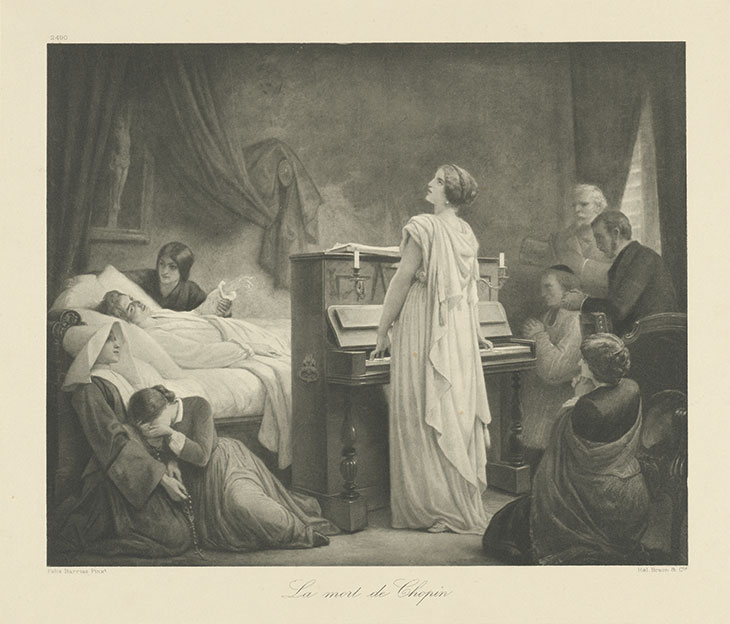
La mort de Chopin (first half of 20th century), photogravure by Braun, Clément et Cie after Félix-Joseph Barrias’s painting of 1885. Fryderyk Chopin Museum, Warsaw
His death mask now resides in what amounts to an above-ground crypt at the Fryderyk Chopin Museum in central Warsaw. There is something a little cultish about the room. Relics in glass cases line the darkened chamber. On one side, pressed flowers from the composer’s death bed. On the other, a print depicting La Madeleine, where Chopin’s funeral, planned by the composer to include Mozart’s Requiem plus his own music, was held in front of (allegedly) 3,000 mourners. Next to that, a theatrical depiction of his last moments: a nun kneeling by his side, his friends weeping, the glassy-eyed, tubercular Chopin reaching out with one hand towards a statuesque woman playing the piano. The deathly mise-en-scène is superb.
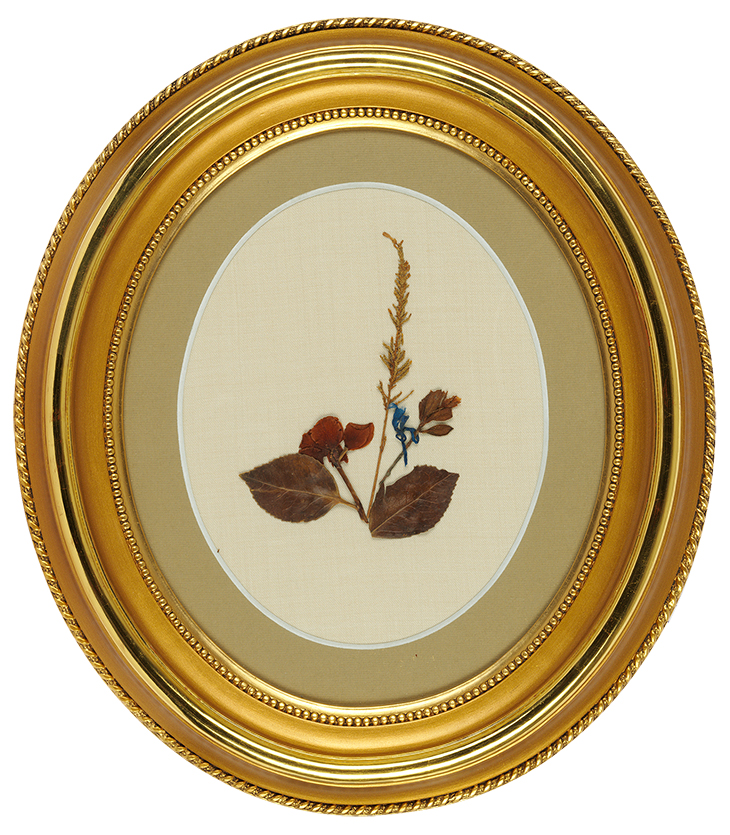
The dried flowers from Chopin’s deathbed. Fryderyk Chopin Museum, Warsaw
Chopin is a spectre in modern Warsaw: ever-present, sometimes claustrophobically close and yet strangely absent, a shimmering surface to the place which makes the true object – Chopin himself – quite hard to see. As you walk along Warsaw’s Royal Route, pianistic tinkles drift through the air like confetti, projected from speakers hidden under city benches. Among the shrubs at the composer’s country birth-house at Żelazowa Wola, more hidden Bose speakers play nocturnes and polonaises, pursuing you around the garden. A nearby Hotel Chopin promises more piped music (and, in my mind’s eye, a themed menu). Tourist shops sell casts of Chopin’s hands in various sizes, an enticement to the adoring parents of ‘musical’ children everywhere.
Until Covid-19, Chopin concerts took place weekly over the summer in Łazienki park, in front of a symbolist statue of the composer – blown up by the Nazis, inevitably enough, and then, equally inevitably, rebuilt. The composer’s heart, pickled in cognac and encased in a mahogany urn, is built into a pillar of the Holy Cross church, a short walk from the Chopin Museum. As Salzburg is forever Mozart’s Salzburg, from the chocolate-and-crockery shops to the gingerbread-coloured Geburtshaus, so Warsaw will forever be Chopin’s Warsaw – or at least one version of him, and of it. Even the airport is named after him (Pope John Paul II gets Kraków).
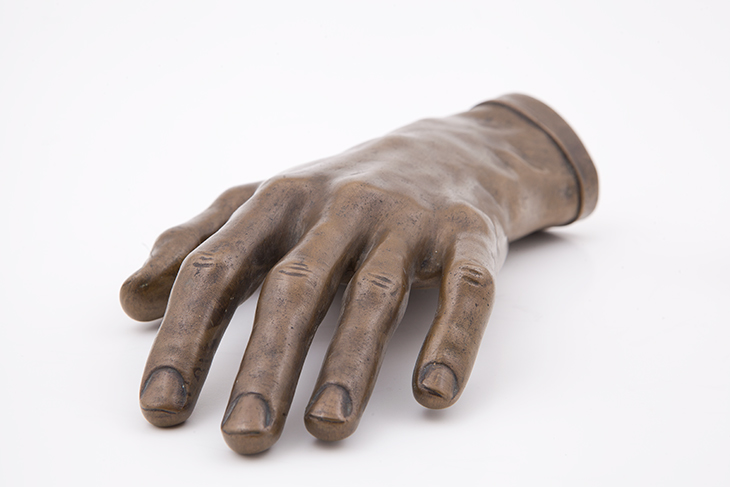
A cast of Fryderyk Chopin’s left hand according to a positive cast by Jean-Baptiste Clésinger (Tadeusz Łopieński, 1968). Fryderyk Chopin Museum, Warsaw
The Communists understood his usefulness. For the centenary of Chopin’s death they organised concerts, particularly of his folksy mazurkas, in factories across the country – 43 in Szczecin alone. A film from the 1950s, Chopin’s Youth, cast him as a budding revolutionary, the people’s friend. His repurposed persona became an element of soft power for the People’s Republic, as it had been for Poles striving for statehood, and as it is now. A Chopin craze swept Mao’s China.
The composer left Warsaw just weeks before the 1830 uprising, with a chalice of Polish earth. He never returned. It was in Paris that Chopin met the feminist and socialist author George Sand, the fixed element in his emotional life for years – despite Chopin initially being put off by her short stature and cigar smoking. And it was across western Europe that the half-French Chopin made his name, and contributed to the romantic rayonnement of Poland with it (mostly in French).
Some of the composer’s most haunting music was written on Mallorca, on a comically awful winter holiday in 1838–39 spent with Sand and her children in a freezing monastery: the locals disapproved of a married woman cavorting with the Polish musician, Chopin had to borrow a sub-standard piano, and went half-mad from illness. A display in the museum shows a wonderful sketch by Sand’s son Maurice, which depicts Chopin on the return journey. It is marked with the description: ‘Chopin feeling sorry for himself in Marseille.’
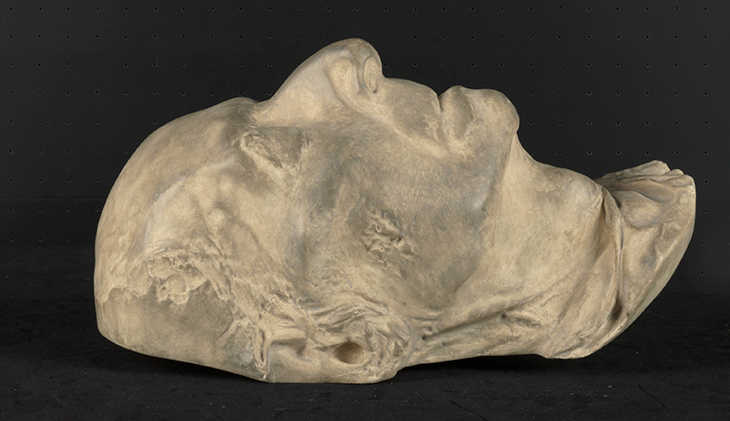
A cast of Chopin’s death mask, after after a positive cast by Jean-Baptiste Clésinger from 1849 (2003). Fryderyk Chopin Museum, Warsaw
The death mask is the emotional climax of the Chopin Museum, and the starting point for his myth. Other items provide more psychological insight. From a letter addressed by Berlioz to ‘Chopinetto mio’, a sketch of Sand, Chopin and their friend Delacroix, or Sand’s own biography and her sketches, one gets, at last, an impression of Chopin as more than a symbol, as a sometimes difficult and tiresome individual, both charming and irritating, an absurdly talented dandy, a patriot, but hardly a proto-Communist revolutionary – or a saint.
![A sketch by George Sand, c. 1842–44, captioned 'Chopin montant quatre à quatre l’escalies [chez] Mme Marliani'](http://www.apollo-magazine.com/wp-content/uploads/2020/09/m_3141_recto_wk_2009_12_16.jpg?resize=730%2C497)
A sketch by George Sand, c. 1842–44, captioned ‘Chopin montant quatre à quatre l’escalies [chez] Mme Marliani’. Fryderyk Chopin Museum, Warsaw
Sand loved his playful impressions of Germans and Englishmen and women, and noted how he went to bed at the same time as her children. Things did not end well for the couple, however. When the time came, Sand did not even attend her former lover’s funeral.
The Warsaw Chopin left in 1830 is no more, of course, most of it having been destroyed by the Luftwaffe. But his ghost would recognise its rebuilt facades. Whereas Coventry and Hamburg were rebuilt as modern cities, in central Warsaw classical edifices were reconstructed as 1:1 replicas, sometimes from memory. The museum itself is housed in what had been a baroque palace and sometime hospital, destroyed by the Nazis and rebuilt in the 1950s.
The reconstructed Old Town of Warsaw is a strollable Chopin-ville. When the evening light catches the buildings a certain way, it’s as though Fryderyk’s carriage never left; you can imagine him waving at you, almost catch his eye.
And then you find yourself on the Stalinist boulevards, where Communist dystopia and utopia combine in concrete wind tunnels. Poland’s 20th-century history comes rushing back. There is no piped Chopin here.
Unlimited access from just $16 every 3 months
Subscribe to get unlimited and exclusive access to the top art stories, interviews and exhibition reviews.

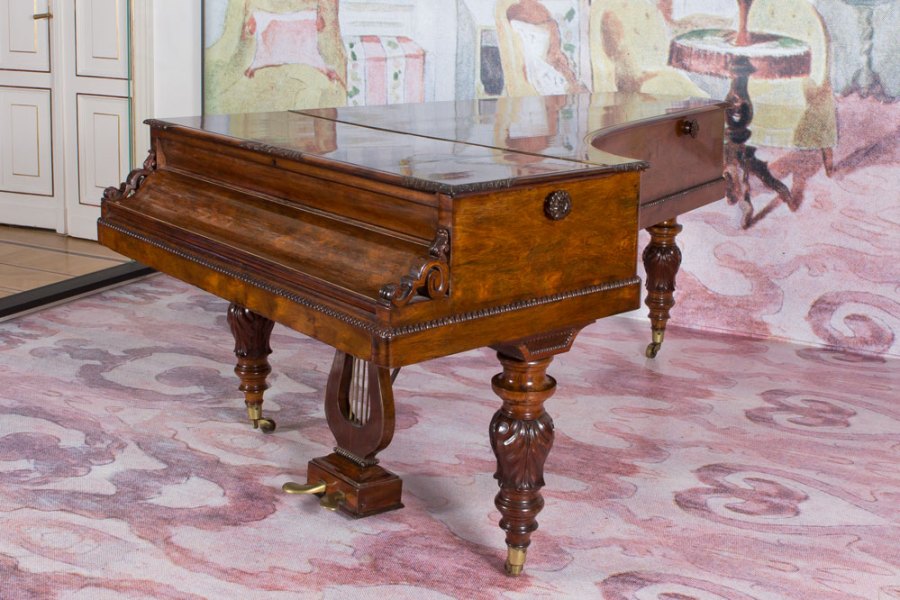
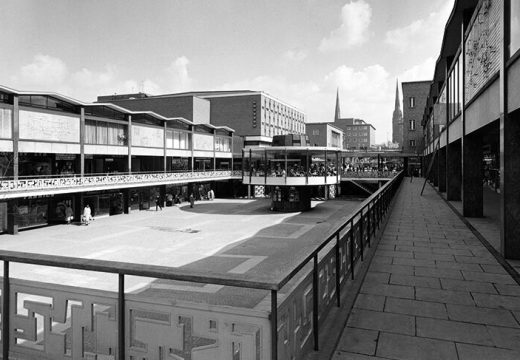

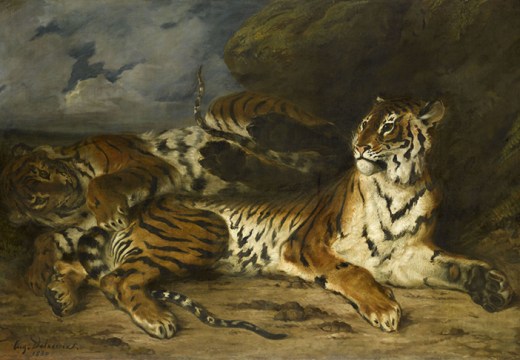









![Masterpiece [Re]discovery 2022. Photo: Ben Fisher Photography, courtesy of Masterpiece London](http://www.apollo-magazine.com/wp-content/uploads/2022/07/MPL2022_4263.jpg)
It’s time for the government of London to return to its rightful home